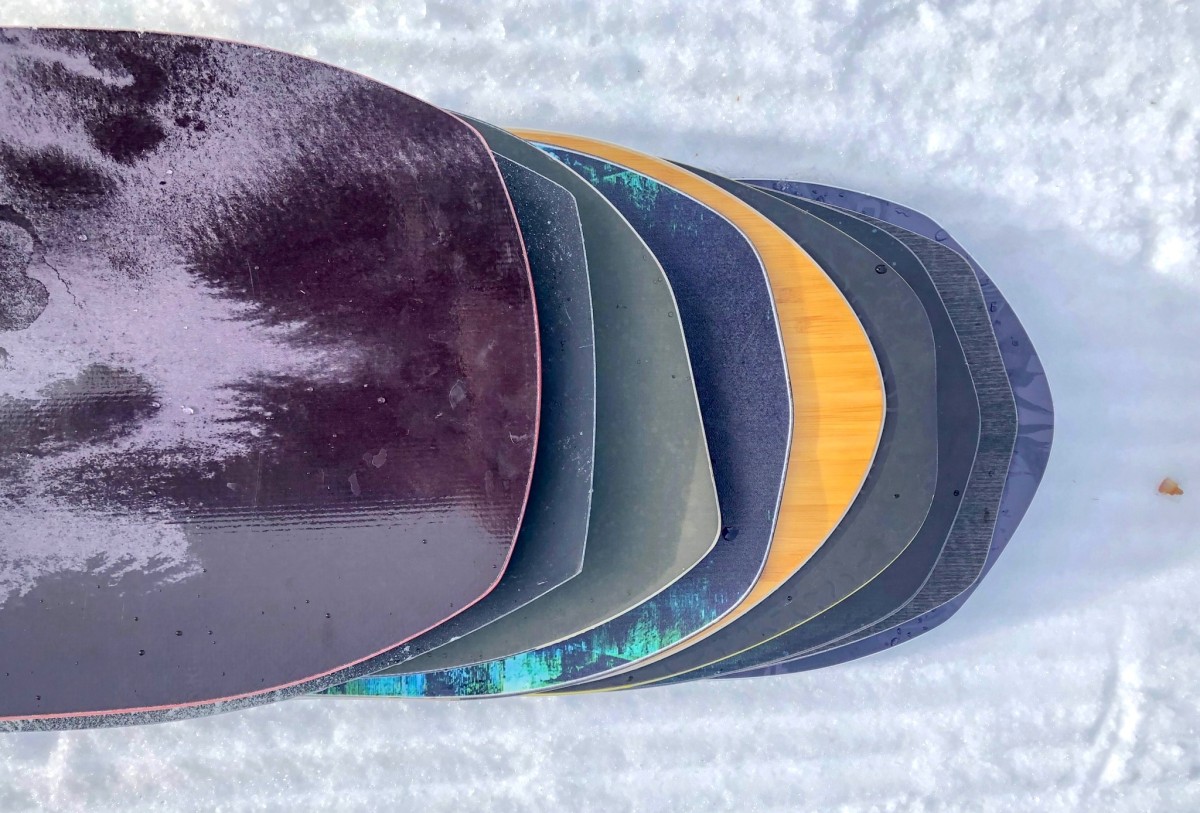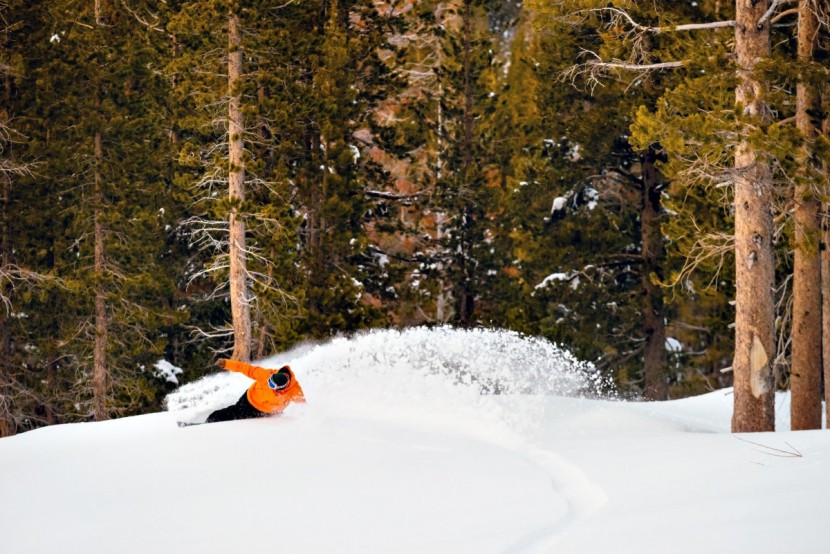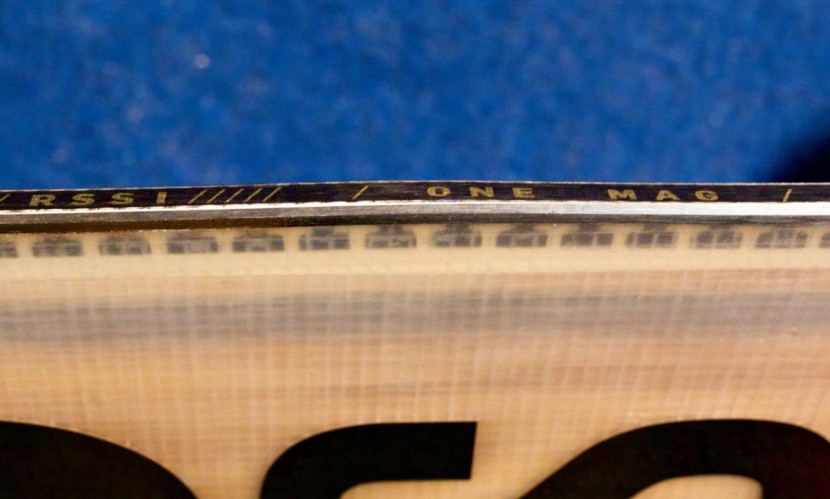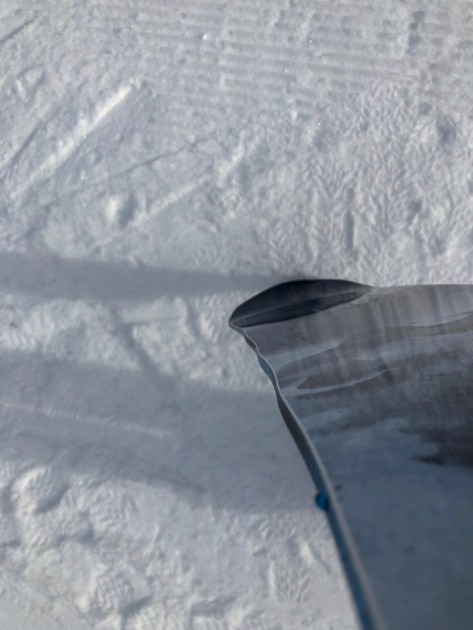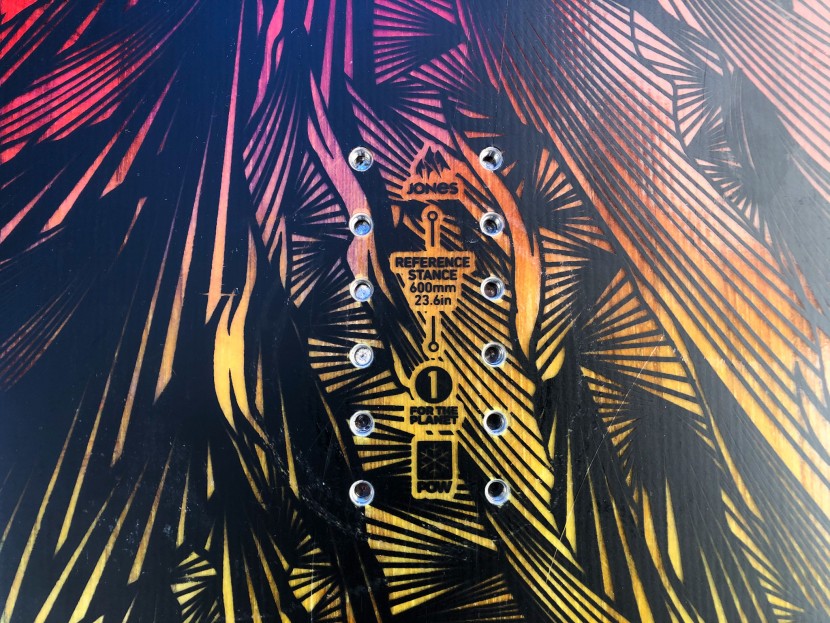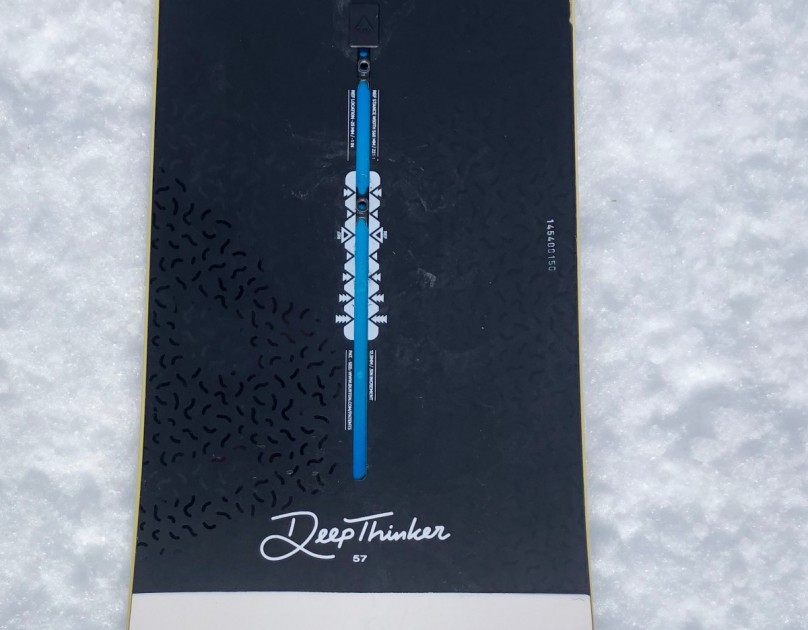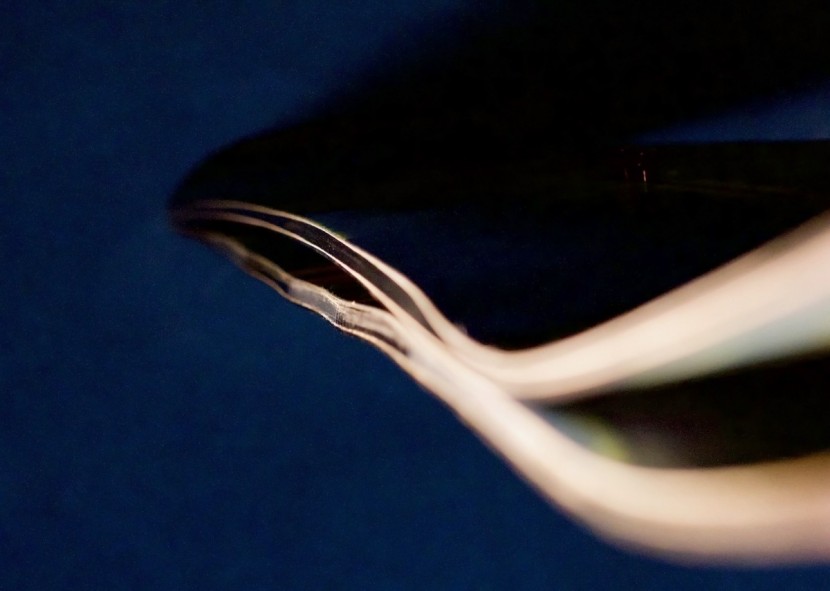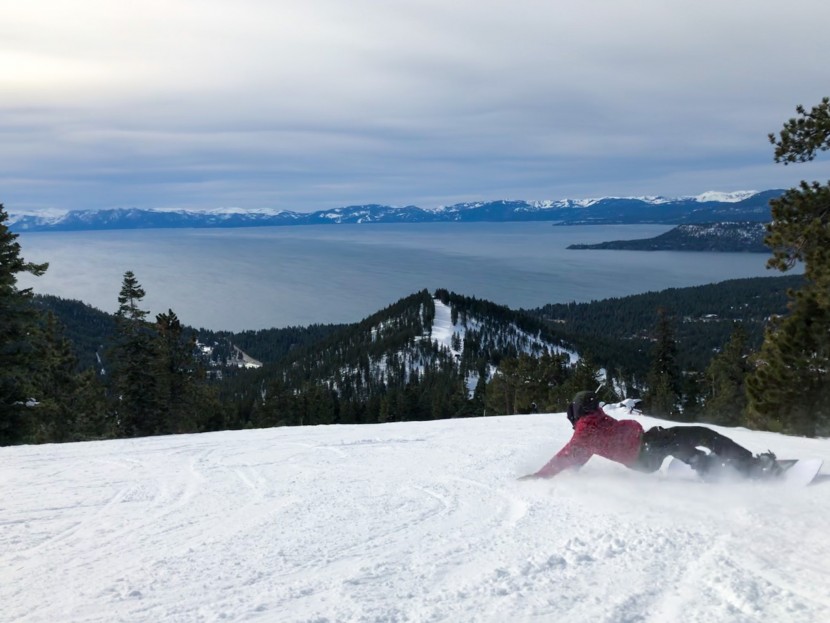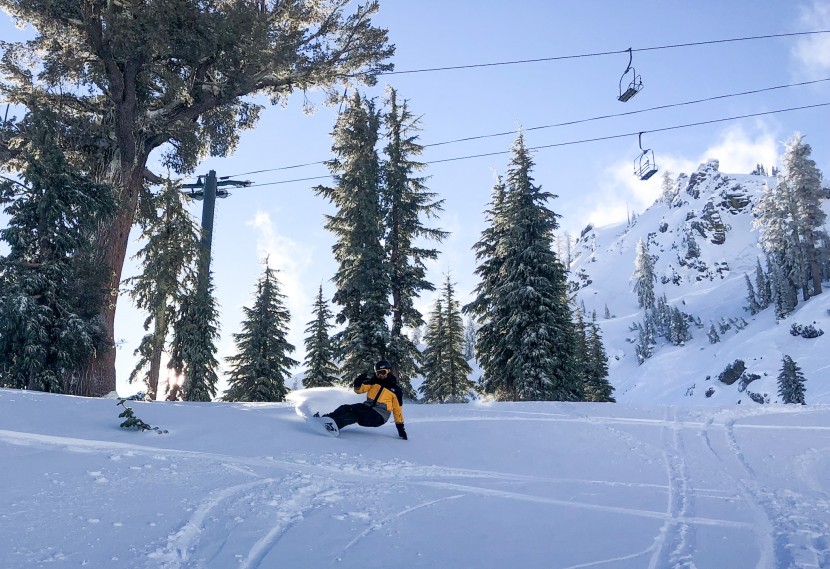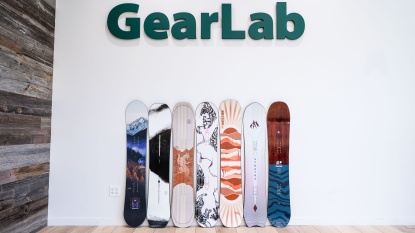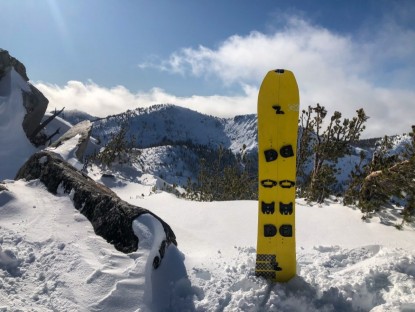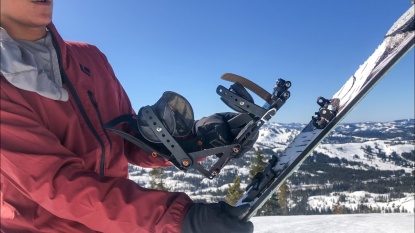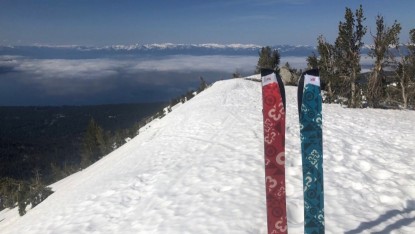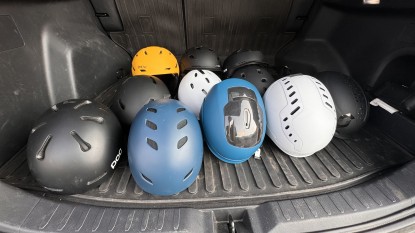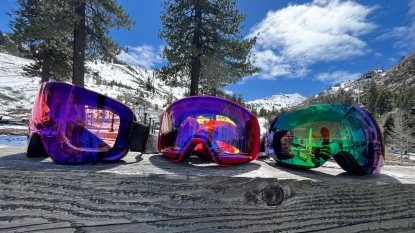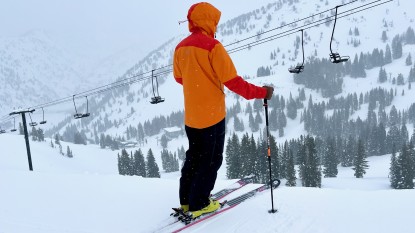The task of purchasing a new snowboard can be daunting. Throughout snowboarding's history, there have been countless brands, styles, and marketing gimmicks that have come and gone. Board companies will never cease pushing the limits in R&D, graphics, shapes, and trends — but for these very reasons, you may have a difficult time choosing one that's best for you. Here's our advice to help you bypass the gimmicks and pick the right board for you the first time.
Designed for Powder, Groomers, or Everything?
There are many categories of snowboards. Snowboards are broken into categories to highlight the proper application of a particular model. Often, boards within a certain category use similar design tactics to achieve specific performance attributes. The type of snowboard is a great place to start because it speaks volumes about the ideal application of each model, which streamlines your search process. As they become more specific in their use, the design features generally compromise other metrics to obtain refined performance in another. Let's dive into the different types of snowboards available on the market.
Different Types of Boards
What Are Your Goals?
Each design combination cultivates a different rider experience. Most manufacturers make a great board. The goal is to match the snowboard to your riding style, like Cinderella and her glass slipper. The enhanced experience will keep you coming back turn after turn, day after day, and season after season.
All-Mountain
All-mountain snowboards are the most common type of snowboard. They are the most versatile and a jack of all trades. As with any product that is designed to do everything, there is some compromise in certain performance metrics. Fortunately, these compromises are nowhere near what they used to be. Snowboard technology has started to close the gap between some polarized wants to provide well-rounded and high-performing options. This has also created a split in the all-mountain category between all-mountain and all-mountain freestyle. A traditional all-mountain board will generally have some freeride influences, like a stiffer directional flex pattern and a slightly setback stance, whereas an all-mountain freestyle board will generally be a bit more playful and use a center stance, twin shape, and flex pattern. If you only want to own one board, then an all-mountain board is for you. If you like to butter, jib, ollie, and skid turns around the mountain, consider an all-mountain freestyle board. If you want a versatile ride with directional performance that offers more stability and float, then a traditional all-mountain board is a great fit.
Freestyle/Park
Freestyle boards are generally lighter, shorter, softer-flexing, and twin-tipped for riding switch (backward). They are designed for jumping and hitting park features like rails, boxes, and other obstacles. They provide equal performance whether you are riding regular or switch. These fun sticks are more akin to skateboards than any other type of snowboard and are often used in such a way. Based on their freestyle objective, they often struggle in edging and require more work to stay afloat in powder. However, they generally excel in pop and playfulness. If you like to spend most of your day in the park, this is the board category for you.
Freeride
Freeride boards are designed to be high-performance and hard-charging snowboards. The most capable snowboards would fall in the freeride category. They are best suited for fast riding, hard carving, technical lines and hitting jumps in backcountry settings. Riders that demand stability and maneuverability to make the mountain their terrain park should seek a freeride board.
They are directional in shape and flex, meaning the flex is softer in the nose and stiffer in the tail. Most directional boards have a setback stance to provide stability and additional float.
The directional design gives it optimal performance in that one direction. Generally speaking, you can ride these switch, but the experience is notably different. If your deck collection is missing that reliable and stable board to push your riding in all conditions and terrain types, a freeride board would be a notable addition.
Powder
You can ride any kind of snowboard in powder, but you may have to work harder than you want to if you're on the wrong board on the deepest day. Powder-specific boards do one thing very well, and that's floating in deep snow. Most have wider and longer noses with tapered and shorter tails or swallowtails.
With modern technology, these shapes can thrive on groomers to carve exceptionally well. This category typically uses a wider waist width to reduce toe and heel drag, but this makes them slower to transition from edge to edge. The short and tapered, or swallowtail designs allow the back of the board to dive deeper into the snow, bringing the nose up higher and facilitating more floatation. This also makes riding backward and stomping huge airs off jumps and cliffs more difficult because there is less tail. You won't often find a backcountry freestyler on a powder-specific board for this reason. If you simply like to ride smooth snow while going forward, this type of ride is good for you. These boards excel in powder flotation, and some do well in edging and stability at speed. Some great powder boards also make sacrifices in the popping, stability at speed, or edging metrics.
The Nuts and Bolts of an All-Mountain Board
Core
The core is the PB&J of the sandwich. Depending on the materials used, the core gives the board much of its strength, pop, and overall feel on the snow. Most often, the core is made of some form of wood such as poplar, bamboo, paulownia, and less often foam or harder woods like maple. Poplar is pretty standard as it has great flex, strength, and price point. Bamboo is often mixed in cores of premium boards. Bamboo provides a progressive flex pattern that gets stiffer the more you flex it and can offer incredible snap, rebound, and pop. Paulownia is an incredibly lightweight and strong wood found in snowboard cores. It provides a fluid and smooth feel to the flex pattern of a board while reducing weight. Be wary of cores made of foam, balsa wood, or some blend of the two. Though they're light and comparable in terms of performance, a large sacrifice to durability is made. Our tester has seen one solid rock hit result in the core coming out of the topsheet of a foam and balsa board. Each type has a distinct feel and character as to how it affects the ride. The blended wood core of the United Shapes Cadet gives it a plush and lively feel, compared to 100% bamboo cores, which gives a board a progressive and aggressive feeling.
Base
The base is the bottom of the board, which is its riding surface. Unless you made your board at home, the base is normally made with high-density polyethylene, or P-Tex, as it's commonly referred to. The two basic types are sintered and extruded. A sintered base is more costly to produce but is tougher, rides faster, and holds wax better. However, it is a bit more challenging to repair. The pros of extruded bases are they more affordable to manufacture and easier to fix. The inherent con is that they are less durable and make for a slower ride.
Edge
If it weren't for edges, most couldn't control where they were going, and carving would be relegated to only the softest days. We love edges because they make snowboarding and skiing versatile and safe. They are made of steel and come sharp from the factory.
They can come in a variety of different styles of edge disruption to provide better grip. Examples include the Underbite on the Yes. Optimistic or the Magne-Traction on the Lib Tech Travis Rice Pointy Pro.
Magne-traction is a serrated edge designed to cut through the hard pack with more surface contact to give you a better grip. It can help lock you into turns whether you're on cord or hard-pack and helps you out on that East Coast blue ice. Adversely, they can make it tougher to come out of turns and can be catchy at slow speeds. It can also make you feel like you can't track perfectly straight while trying to beeline it. Standard edges tend to have a little less bite on really hard snow. One of the largest keys to edge hold is maintaining and tuning them.
Sidewall
Sidewalls are the area between the edge and topsheet to protect the core materials. Sidewalls can also provide dampening capabilities, to which degree depend on the type of material used. Most sidewalls are made of ABS, a petroleum-based plastic. Many manufacturers are using recycled ABS to help lower the carbon footprint of the product. For the environmentally conscious, it is worth knowing that traditional ABS plastic is one of the more harmful components used in snowboard construction. Other options exist, such as the soy-based sidewall used in the Lib Tech Travis Rice Pointy Pro.
Urethane sidewalls are found in specific brands to provide additional dampening capabilities relative to their ABS counterpart. All the boards you'll see in this test are the sandwich type of construction where the sidewall is displayed. Other types (not tested) include cap and half-cap.
Inserts
These are the female, t-nut style, threaded nuts placed in the board during construction to which you attach your bindings. Most manufacturers utilize a multi-pack of inserts under each binding to give you plenty of stance width options. Some companies, like Burton, use inserts in a super convenient slider track, which is nice for changing your stance in less time than the standard four-hole style. All brands here, with the exception of Burton, utilize four-hole insert packs.
Four-Hole
The bindings mount using an adjustable disk in which four machine screws are placed through and tightened firmly into the inserts of the board. Before you tighten the screws, you can adjust your stance angle, width, and centering from toe to heel. Once tightened, they should not move.
Channel System
Burton's trademarked Channel system is much different looking than the standard four-hole system. It uses only two screws and a slider track for each binding, allowing for quick and simple stance changes. Most binding companies offer disks to fit the EST mounting style.
Topsheet
The topsheet is what covers and seals the top of your snowboard. The basis of the topsheet is either fiberglass or carbon. Each material provides inherent properties over the other. Fiberglass is the standard; it is more affordable and flexible but heavier than a carbon fiber topsheet.
The aesthetic part of the topsheet can be made of a variety of materials. The goal is to shed snow and resist chipping or delamination. Pretty much every topsheet collects snow, but there is some variation to how much. The primary function of this component is elemental protection for the core of the snowboard to prevent water-logging and promote a longer life for your board.
All-Mountain Options
Flex
This is usually measured using a number scale like 1-10, one being the softest and ten being the stiffest. Manufacturers make finding this measurement easy because it can be an important one. However, not all 6s are made equal, but this number still gives you valuable information about what to expect.
The stiffer the board, the more pop typically, but we've found that stiffer boards also fight the pow more and are not as playful. Softer boards are generally more forgiving and nimbler, but when you go to ollie, they lack the response you'd hoped for. Your weight plays quite a role in stiffness; simply put, the more you weigh, the stiffer the board you should buy, or the larger size of a softer model you should ride, and vice-versa. The flex is a large driver in the actual feel of the snowboard, which can have a direct effect on your quality of experience. The type and layout of the wood dictate its feel, which can be fun and lively or bland and dead.
Camber Profile
Camber vs. Reverse Camber (Rocker) vs. Flat vs. a combination of all three! Most board companies have their own board profile designs, each with their trademarked names for them — Banana, Flying-V, and so on.
Fully cambered boards are referred to as traditional camber and were the first profile used in snowboards. The profile looks like a frowning face. They are poppy and very responsive; they'll hold turns well and are very stable at speed and those big-air landings.
Reverse cambered boards have a smiley face profile to them to lift the nose and tail off of the ground. They are more playful but lack the same ollie response as camber and don't track straight quite as well at slower speeds.
Because the nose and tail essentially begin rising earlier than on cambered boards, they tend to float better in powder and are easier to learn on. There is noticeably less chance of catching your edges near the tip and tail while spinning on flat ground, on park features, or learning. When learning how to snowboard, this profile will substantially help you stay on your feet rather than your stomach.
Hybrid profiles are common in all-mountain boards to manage the drawback of one profile and provide the benefits of others.
Weight
Because most brands have varying dimensions and materials, you will find varying weights. The differences may be too little to notice in the shop and carving; instead, you're likely to notice the added weight when jumping, spinning, and playing around on side hits. Of course, don't buy the heaviest board, especially if it's a tank and too large for you to have fun on. In contrast, lighter boards, like those made with a foam or lightweight wood core, can compromise strength.
Length
Too long, and you'll have a tougher time initiating and releasing turns, which can be dangerous in tight terrain like trees and couloirs. If intentionally sized larger, you will have more stability for stomping airs in the pow with more confidence. Too short, and you'll wallow in the deep, being left to wonder where your friends went, but you'll spin faster on jumps and have less baggage to clear when popping on and off rails. If you size just right, you'll feel confident all over the mountain.
It comes down to what conditions you will primarily be riding. Powderhound? From your chin to your forehead works. Park and hard-pack? Somewhere between your collarbone and chin is usually good. While these are our general guidelines for sizing, we recommend you look at the sizing chart for the particular board you are interested in. The board can feel how heavy you are, not how tall you are.
Width
Pick a board that is just wide enough so your toes and heels don't overhang and drag. Drag prevents you from really laying your turns down on those high-speed days or carving days. Toe or heel drag causes you to slip out when it's anything other than pow. The overhang will slow you down when you're riding the deep stuff and can be particularly dangerous on steep, hard-pack terrain! Losing edge control above exposure can get dicey quickly. Choose wisely and get as streamlined as possible.
Measure your boots from toe to heel and compare that with the waist width of the boards you're interested in. Keep in mind that the waist width of the board is narrower than where your bindings will be mounted. If you can physically see how your boots sit on the board, it'll help a bunch. We'd fully recommend having all three components together when choosing a board: Board+Boots+Bindings.
Volume Shifted
A volume-shifted snowboard reduces the length and increases the width in order to provide similar levels of surface area and stability to their longer counterparts. This allows for increased floatation and a drag-reducing turning platform that is easier to control and more playful due to the reduced length. These boards are very fun on smooth snow. The wider waist width makes them a touch slower to initiate the turn, which is no big deal when riding groomers but can make riding bumpy off-piste terrain more difficult.
Sidecut
Sidecut is measured using the radius of a circle in meters. The larger the measurement, the bigger and longer the arc of your turns will be. At high speeds on a nice wide groomer, long sidecuts feel really cool. Shorter radius sidecuts are very fun and work better for the average riding style. They make quicker turns, feel responsive, playful, and versatile.
Taper
Taper is when the nose is wider than the tail. Taper is a shaping technique used to improve powder performance and turn initiation and ending on hardpack.
The greater surface area found in the nose provides increased flotation, especially when paired with reduced surface area in the tail. This allows the tail of the board to be driven down in the snow by the rider's weight and reduces the amount of effort required. The larger the taper, the more that tail will sink into the snow.
On hardpack, taper changes and supports quicker and more energetic turn initiation and finish with your turn. However, it complicates switch riding.
Bonus Things
Graphics
We encourage you to purchase a board based on its performance design rather than aesthetics. That being said, graphics are a worthy consideration. You will be looking at the top of the board every time you're on the chair, while tweaking big airs, or when you lean the board against the wall at home after a long day of shredding. You have to live with your purchase, so it's nice when you like the way it looks. In the offseason, a beautiful snowboard can become functional art that you're stoked to look at. When you walk up to the board selection at the shop, what's the first thing that catches your eye? Check it out and see if it fits all your other requirements. If so, you're done! Easy enough.
The Cinderalla Slipper
Each snowboard utilizes the design characteristics we discussed to create a board that thrives in a particular style. Our goal is to match our desired style of riding to the proper board. Just like Cinderella and the glass slipper, when we find our perfect match, magical things happen. Take a moment and think about what your style of riding is. What conditions do you normally ride? What kind of terrain? How do you like to ride? Check out our best snowboards review and pay attention to the metrics that matter the most to you. Then read the individual reviews of your personal standout models to help you find the one.

